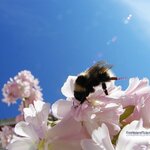Environment

According to this article written in May 2009 by Michael Sheridan in the Australian newspaper and also reported in The Times in the UK, thousands of Chinese factory workers who manufacture 'environmentally friendly' mercury compact fluorescent light bulbs (CFLs) for export to first world countries have been poisoned and hospitalized because of mercury exposure over the last decade.
“68 out of the 72 workers at the Nanhai Feiyang lighting factory in Foshan city where were so badly poisoned that they required hospitalization. At another CFL factory in Jinzhou, 121 out of 123 employees…

Nearly 30% of the forest plants are uniquely Himalayan, and are not found anywhere else in the world. These include certain species of Oak, Rhododendron and Pine. About 125 plant species are wild relatives of cultivated plants, including cereals, legumes and nuts. These constitute valuable gene-pools which can be used in future for the improvement of crops. Of the 1,500 species of angiosperms known in India, 20 to 49% occur in the Himalayan province. More than 30% of these angiosperm plants are entirely endemic and economically quite useful. Nearly 7,020 species or 54% of the Indian Fungi…

I have a unique ability to put things in places where they don't belong, leave them there temporarily until I can find a good place, get used to them being there, then forget they are there altogether. I don't know if this skill is unique to those of us who possess an Y chromosome, but I am definitely quite good at it.
Sometimes, these misplaced "things" are really ideas. One of these misplaced ideas is the belief that moles are an indication of a grub infestation. It's been sitting there for so long, I often forget it's even around.
The basis of this idea is an erroneous error of logic.…

Swarms of locusts are predicted across four Australian states in coming months and the sprays used to kill locusts also harm and kill bees, which is a big concern to Australia’s beekeepers.
The 4 billion dollar bee industry produces honey and pollinates plants for farmers, such as almond, peach, nectarine, cherry, plum, blackcurrant, blueberry, cranberry trees just to mention a few. See http://en.wikipedia.org/wiki/List_of_crop_plants_pollinated_by_bees for a full list of crops pollinated by bees.
The bees are moved around from one area and crop to the next to pollinate plants and make…

Plants are an integral part of nature and the nature reflects the creative powers of God. The plants are designed with a specific purpose. The physical beauty of plants and its chemistry, are of immense importance to humankind. They are the life sustaining forces on earth. The planet Earth is estimated to have originated about 4.7 billion years ago. The first prokaryotic organism evolved about 3.5 billion years ago and the eukaryotic cell appeared on the earth about 1.5 billion years ago as per the radioactive dating. The land plants appeared for the first time in the Silurian period of…

An article posted on August 22, 2010 by Coober Pedy Regional Times claims that “Banned US neurotoxic insecticides Diazinon, Chlorpyrifos and others are about to be unleashed over South Australia to protect crops from locusts with a possible assistance scheme for farmers who choose to use these chemicals.” See http://cooberpedyregionaltimes.wordpress.com/2010/08/22/mla-locust-contr...
Even though according to another report by the Australian Environment Protection Authority (EPA) called “Assessment of the impactof insecticide spraying of Australian plague locusts JULY 2001” at http://www.epa.…

Improving Biomass Use Efficiency for Semi-Arid Regions
Anupam Tewari* and Ashwani Kumar
Kautilya Institute of Technology Engineering*
Energy Plantation Demonstration Project CentreDepartment of Botany, University of Rajasthan,
Jaipur, 302004, India.
Tel 00 91 141 2654100 Fax 00 91 141 2565905 E-mail: msku31@yahoo.com.
ABSTRACT: Biomass refers to all the matter that can be obtained from photosynthesis. Most vegetable species use solar energy to create sugars from carbon dioxide and water. They store this energy in the form of glucose or starch molecules, oleaginous, cellulose, and…

I have to be honest. When I started writing this blog, I didn't anticipate the interest it has garnered from various media outlets. Cool stuff! Here are a few links to check out a recent interview and to subscribe to the free Podcast.Subscribe to the Podcast
Local Business Owner Starts Skeptical Blog

What science is not able to achieve on a large commercial scale: develop simple cheap and reproducible method to digest and convert the cellulosic material into ethanol in one step prcess animals do it each day at least they digest the fibers and bring it down to sugar and fatty acid level . The microbes helping this process in the gut of cow and buffallow could provide the clue to getting some genes for doing the job at much lower price then billions of dollars being spent on finding the answers.
However if its true or not only experimentation can tell.

Jatropha curcas grows wild in Udaipur division in Rajasthan. Chattisgarh state and several other northern states of India Under the micromission programme of Department of Biotechnology, Govt of India under chairmanship of Professor A.K. Sharma and Dr Renu Swarup, Director, and Dr Meenakshi Munshi Joint director work is being carried out in different states of the country regarding selection of eltie mateiral, its propagation, yield evaluation, genetic characterisation and developing proper agrotechnology. Under a Department of Biotechnology research project sanctioned to Professor Ashwani…